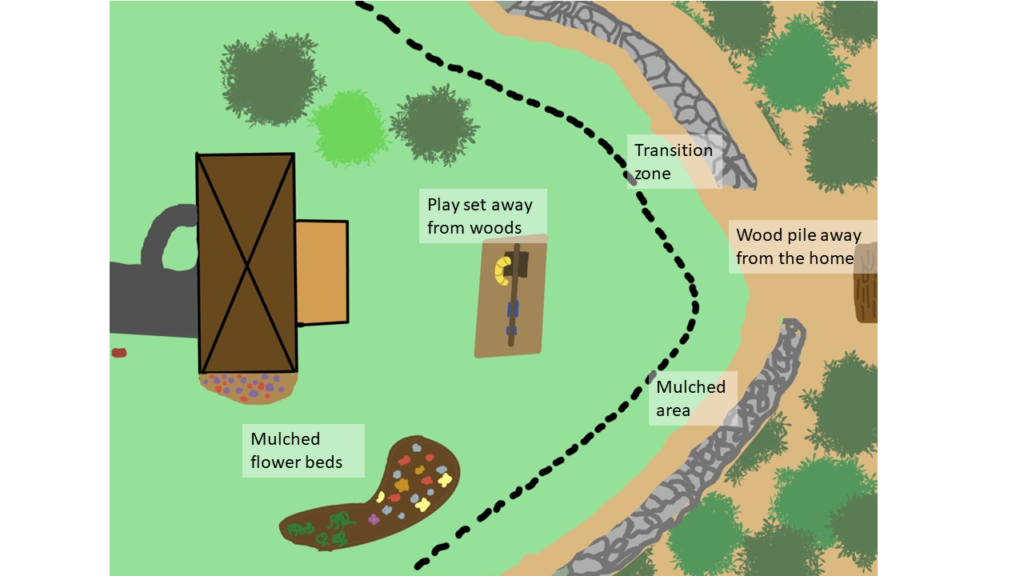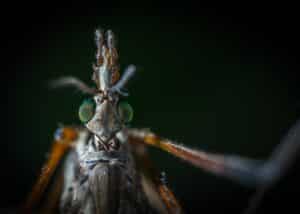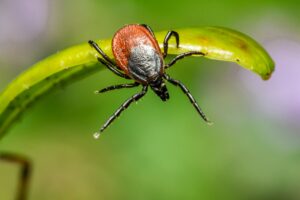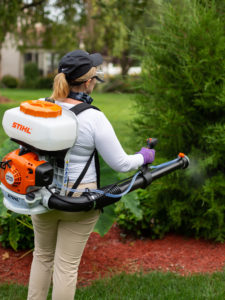The U.S. is experiencing a tick-borne disease epidemic. Cases of tick-vectored diseases have grown from 15,000 in 1999 to 60,000 in 2017. Researches also believe the the incidents of these diseases are very under reported so the actual numbers of disease infections from ticks are even higher!
Our job as people involved in the pest control industry has never been more important. We face no threat larger than “the tick”. Our opportunities to use Natural tick control techniques have never been more important.
In the U.S. there are many types of ticks that cause issues for homeowners, for the purpose of this blog post we will focus on three:
- Black-Legged Tick (Ixodes scapularis) – carrier of Lyme disease
- Lone Start Tick (Amblyomma americanum) – carrier of Ehrlichiosis
- American Dog Tick (Dermacentor variabilis) – carrier of Rocky Mountain Spotted Fever
1. Property Inspection: Think Like a Tick
Ticks like shady places with lots of leaf litter. This is because they like trapped moisture, they are very susceptible to drying out (desiccation).
As you are walking the property think: Light bad — Shade good
Make mental notes of where those ticks are going to be hiding.
If the property has a clear line of mulch separating the woods from the yard, your job will be easier. That mulched zone is like a desert to a tick looking for a host. Nothing for it to hang on to when questing. Nothing to hide it from the heat of the sun.
If the property has a lot of dense brush, tall grasses, woodpiles, with lots of shade, get ready, you are about to have tick battle on your hands.

2. Turn Up Your Throttle & Your Dial
I know pest control owners hate to hear this, because this solution sounds expensive.
Ticks are a different world from mosquitoes, and tick treatments are very different.
An in-depth tick treatment will take your tech longer and will require more product than a similar mosquito-focused job.
You need the extra power of the maxed out throttle -
During the height of tick questing season, all your techs should be wearing clothing treated with Deet and possibly also permethrin. They can be exposed to many hundreds of questing ticks and the disease risks will be very real for them.
If they are treating a backyard with heavy leaf litter or tall ornamental grasses they are going to need to turn up the power on their blower mister and go at it.
Leaving the nozzle as close down into the target zones as possible. Stirring it all up as they go. Those leaves and grasses should be moving as they go along.
In a bad backyard you might put down 8 gallons of RTU formula. I know this sounds expensive, but the name of the game here is excellent coverage and killing the ticks where they are hiding.
3. Aim The Nozzle Low Down - (3 Feet or Lower)
Target your tick treatments around 3 feet and below. Think about the ticks favorite ride-sharing platform, white footed mice, dogs, chipmunks, and deer.
Use a sweeping motion as you walk.
Keep an eye out for any deer paths through the yard.
Walk the entire perimeter of the yard between the forest or dense vegetation and the yard.
Sweep about three feet in from the dense vegetation. This is the transition zone where ticks will go when they are questing and seeking a new host.
4. Do Not Treat The Center of The Yard
Ticks do not hang out in the sun, in the middle of the yard.
Do not treat here, it is an over treatment, it will waste time and money. It does not deliver an added value to the homeowner (for tick control).
[This discussion is about tick control, if you are targeting more than one pest, treating the entire yard, or parts of the yard might be needed. Any PCO reading this already knew that, but I just want to make it clear for anyone else.]
5. Consider Offering Additional Services Targeting Tick Hosts
Ticks need to hitch a ride to get into a yard.
Hundreds of animals can provide them transportation. Some of the most common are: white-footed mice, chipmunks, dogs & deer.
As a pest control professional, you can help slow re-entry of ticks into the yard by working with the homeowner to manage the common hosts.
If you think deer might be a problem in a backyard because you see a deer path or the homeowner reports the deer are eating their flowers, the homeowner might consider a fence to make their yard seem less appealing. Even reducing the number of deer by half can have a huge impact on crashing the tick population in a yard.
Additional services you can consider adding include:
Since approximately 90% of deer ticks feed on deer at some point in their lives, limiting deer in a yard can be essential to reducing the number of ticks.
- You can consider offering an add-on service where you spray a deer repellent around the property to assist the property owner. Some commercially available deer products are fairly effective, and anything you can do to reduce the number of deer will greatly help with the tick problem.
The white-footed mouse, Peromyscus leucopus, is the most abundant reservoir for Lyme disease bacteria. Limiting them can be essential in protecting the health of a homeowner and their family. – The homeowner can help by eliminating potential mouse nesting sites. Such as woodpiles, stone fences, cracks in out-buildings, etc.
- As a pest control professional, you can offer rodent targeted cardboard tubes and bait boxes. These are EPA regulated devices and only pest control professionals can use them. These methods can greatly help to limit the ticks vectored by rodents in a backyard.
Conclusion
Keep these things in mind when treating a back yard for ticks:
- Think like a tick – Shade Good / Sun Bad
- Turn Up The Throttle!
- Aim The Nozzle Low
- Do Not Treat The Center of The Yard
- Consider Offering Additional Services
As always, frank and open communication with the home owner is essential to success in tick control. As the pest control expert, they will look to you for advice and suggestions about how they can best protect their family from ticks.





